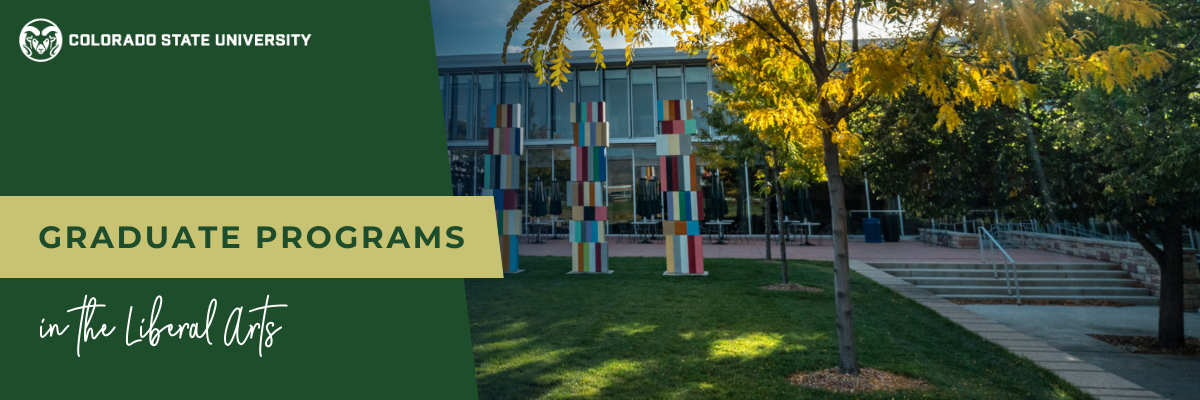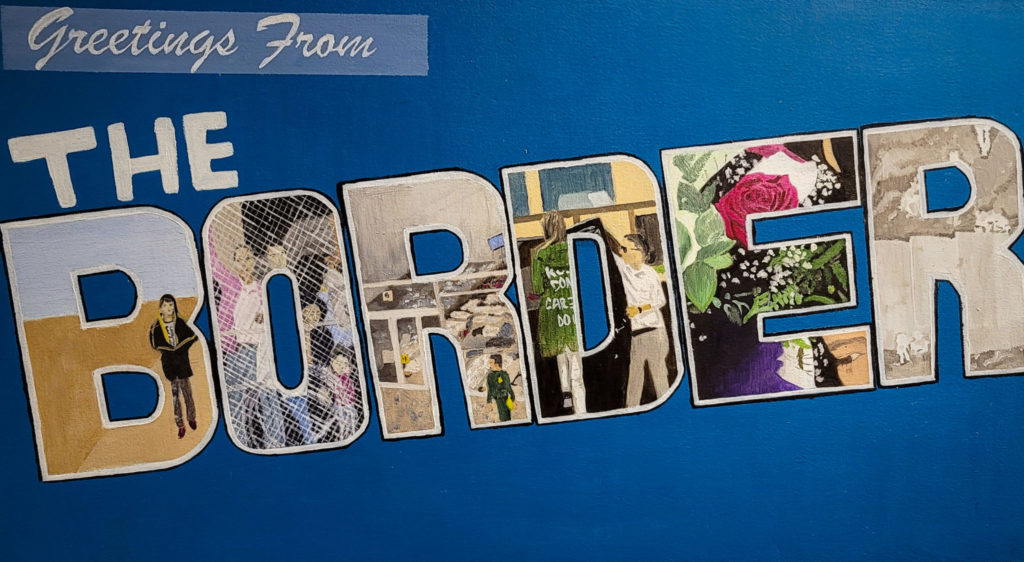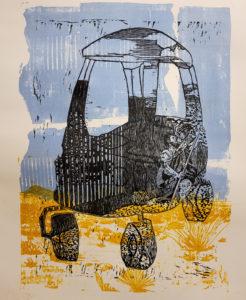
By Shelby Skumanich

Vicente Delgado is a second year Masters of Fine Art student in the Department of Art and Art History studying printmaking. Born in El Paso, Texas, the mid-sized city of west Texas that sits close to the Mexico-U.S. border, Delgado’s work explores themes of childhood, nostalgia, consumerism, the borderland, and immigration. By utilizing iconic imagery of both American and Mexican culture, Delgado’s work expresses the experience of liminal identity, an identity that encompasses the overlapping and layering of multiple identities and experiences simultaneously. It is a hybrid; an identity that is not “either or” but “both.”
“Both of my grandmas were from wealthier families in Mexico, and wanting a better future for their families, they both migrated to Juarez, Chihuahua. My father was born in El Paso, Texas but raised in Juarez, and my mom was born and raised in Juarez,” says Delgado. “I was born in El Paso, Texas, lived in Juarez maybe the first year of my life, and later moving to lower the El Paso valley.”
Delgado begins creating art through photographic explorations of landscape, a pastime he picked up when he was young. Growing up, he spent time in both Mexico and the US and notes there was a deep awareness of the immigration experience in his community. When he was in Mexico as a child, his dad played baseball on Sundays and he and his friends would wander off into the desert. As an undergraduate student, he wanted to tap into that mindset and started wandering the desert in his car to find dump sites. He paid particular attention to the children’s toys, which were often slightly broken and faded from the sun. Noticing a sense of nostalgia when he was photographing, he notes that many toys and other nostalgic items wouldn’t come with them when his family moved.

“I was thinking about these toys that are just being tossed,” says Delgado, “Whoever’s throwing this out is obviously not the kids, it’s the decision of the parents. We moved a lot when I was a kid; I lost a lot of stuff like perfect attendance awards and trophies. I remember going to my fiancé’s home. She has her trophies on the wall. I remember getting all those, but I don’t know where they are.”

Lithograph and Woodcut print. 24″ x 16″. Courtesy of Vince Delgado
In 2018, Delgado started noticing not just children’s toys but also children in the desert. Near his neighborhood in El Paso, there was an immigration facility that housed undocumented children.
“I started working with their memory, their nostalgia,” he says, “Maybe nostalgia starts kicking in once they cross the border.”
The Lil’ Tykes car is one of many iconic American toys that reappear in Delgado’s work. Lil’ tykes is American-based toy company and the little red and yellow car they make is instantly recognizable. He also incorporates religious imagery, notably Saint Christopher, the saint that many people in South America pray to when they send their children out into the world.
Utilizing both the photographic and illustrative qualities of printmaking, his prints layer desert scenes of decay, children’s toys, and American and Mexican iconography. The work leaves the viewer with a haunting impression of the layering of identity and place.
“I wanted to bring everything together. I started drawing these characters of parade vendors who are out there selling these really cheap toys. Probably cheap toys that don’t even last as long, toys that don’t build a memory for a kid. What if I put them with this decaying trash?” says Delgado of one his prints.
“Vince Delgado exemplifies the capacity of printmaking to create an interdisciplinary bridge between journalism, political activism, archeology, and poetic moments of deeply personal narrative,” says Johnny Plastini, “His work analyzes ‘modern ruins’ through materials and imagery that relate his own cultural experiences to a larger sociological conversation.”
Delgado’s prints leave the viewer with a sense of impermanence that is echoed in the layering and juxtaposition of his subject matter. By exploring the ephemeral nature of both objects and nostalgia, his work demonstrates how the recollection of childhood is linked to what we keep and what we leave behind.
The Master of Fine Arts program offers specializations in several disciplines: drawing, fibers, graphic design, metalsmithing, painting, printmaking, and sculpture. Learn more at the department’s website.